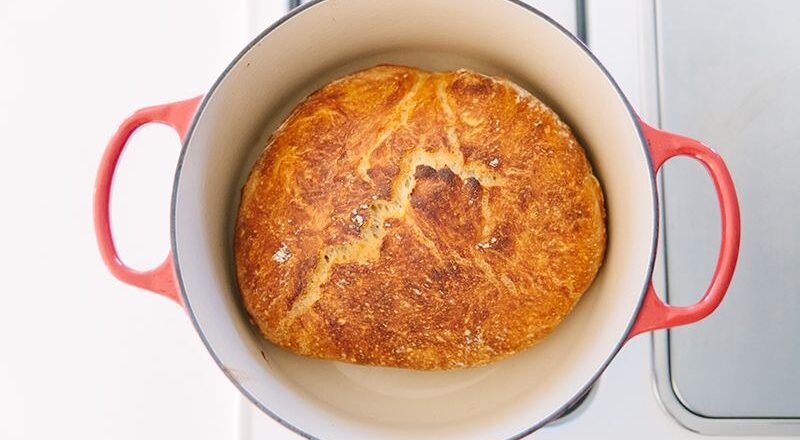Dutch ovens have long been a staple in many kitchens, prized for their versatility and durability. But one peculiar feature that often catches the eye of cooks and food enthusiasts alike is the presence of spikes, or ‘spikes,’ on the underside of the lids. Why are these seemingly odd protrusions there, and what purpose do they serve? In this detailed article, we will dive into the intricacies of why Dutch oven lids have spikes, exploring the science and history behind this fascinating design.

The Origin of Dutch Ovens
The Dutch oven is a venerable piece of cooking equipment with a rich history dating back centuries. Originally crafted in the Netherlands during the 17th century, these pots have evolved considerably over time. Modern Dutch ovens retain some of the original design principles but also incorporate various innovations, such as the spiked lid.

Understanding the Function of the Spiked Lid
Improved Moisture Retention
The primary and most significant reason for the presence of spikes on Dutch oven lids is to provide better moisture retention. As food cooks inside the pot, steam rises and hits the lid. The spikes then act to disrupt the formation of large droplets of condensation. Instead of water pooling, the spikes help to evenly distribute the moisture by causing smaller droplets to form, which then fall back down onto the food. This enhances the flavor and ensures your dishes remain juicy and tender.
Even Heat Distribution
Another crucial function of the spiked lid is its role in achieving even heat distribution. The spikes allow for a more uniform collection and return of heat within the cooking environment, leading to more evenly cooked meals. For instance, if you are roasting meat or baking bread in your Dutch oven, the spikes can help to ensure that every part of the food is exposed to consistent temperatures.
Historical Development of Spiked Lids
Historically, the inclusion of spikes in Dutch ovens can be traced back to early innovations. Traditional cooking methods required efficient heat and moisture management, and spiked lids provided a solution that modern cookware often overlooks. The initial design transformations of the Dutch oven incorporated these spikes as more than just aesthetic choices; they were practical solutions to cooking challenges of the time.

The Science Behind the Spikes
Convection and Heat Regulation
Understanding the science behind the spikes involves delving into the principles of convection and heat regulation. Dutch ovens are often used for slow-cooking recipes, where the control of moisture and heat is essential. The spikes facilitate a unique convection process within the pot, allowing steam to circulate more effectively and thus regulate the internal temperature more efficiently.
Enhanced Flavor Profile
One of the lesser-known benefits of the spiked lid is its contribution towards enhancing the flavor profile of dishes. The even redistribution of moisture helps to meld the flavors more uniformly, creating complex and rich tasting meals. From stews to roasted meat, this small feature can significantly impact the quality of your final dish.
Cooking Versatility
The presence of spikes on Dutch oven lids adds to the versatility of the pot. Whether you are baking, roasting, or stewing, the lid helps in maintaining the ideal environment for a wide variety of cooking techniques, making the Dutch oven a multifaceted tool in any kitchen.
Popular Recipes that Benefit from Spiked Dutch Oven Lids
Bread Baking
Bread baking is one of the most popular uses of a Dutch oven, particularly because of the spiked lid’s efficacy. The even moisture retention helps in achieving the perfect crust and crumb for artisanal bread. For a detailed guide on baking bread in a Dutch oven, feel free to visit our [how-to-make-bread-in-a-dutch-oven](https://howtocleancastiron.com/how-to-make-bread-in-a-dutch-oven/) page.
Delicious Roasts
Roasts are another excellent example of dishes that benefit from Dutch oven spiked lids. The consistent heat and moisture control ensure that your roast is both tender and flavorful. To master the art of cooking roast in a Dutch oven, check out [how-to-cook-pot-roast-in-dutch-oven](https://howtocleancastiron.com/how-to-cook-pot-roast-in-dutch-oven/) for some fantastic tips.
Flavorful Stews
Stews, with their need for prolonged cooking times and moisture management, are perfectly suited for a Dutch oven with a spiked lid. This cooking method allows the meat and vegetables to cook properly while absorbing all the flavors. Interested in more stew recipes? Heres a [how-long-to-cook-roast-in-cast-iron-skillet](https://howtocleancastiron.com/how-long-to-cook-roast-in-cast-iron-skillet/) link for some inspiration.
Maintenance and Care for Spiked Dutch Oven Lids
Cleaning Tips
Maintaining your Dutch oven and its spiked lid is crucial for its longevity. Cleaning should be done gently to avoid damaging the spikes. For a comprehensive guide on how to clean your Dutch oven, refer to our [how-to-clean-dutch-oven](https://howtocleancastiron.com/how-to-clean-dutch-oven/).
Seasoning Your Dutch Oven
Seasoning is another important aspect of Dutch oven care. Regular seasoning helps maintain the non-stick quality and enhances the cooking performance of your pot. For a detailed guide, you can visit this useful [external link](https://www.wikihow.life/Clean-a-Dutch-Oven) clean-a-Dutch-oven.
Conclusion
In summary, the spikes on Dutch oven lids are not just quirky design features; they serve significant functional purposes that enhance the cooking process. From improving moisture retention to aiding in even heat distribution, these spikes make Dutch ovens an incredibly effective tool in any kitchen. So, the next time you use a Dutch oven, you’ll know exactly why those little spikes matter.
FAQs
What is the main purpose of spikes on Dutch oven lids?
The main purpose is to improve moisture retention and ensure even heat distribution during cooking.
Can I use a Dutch oven without a spiked lid?
Yes, you can, but a spiked lid significantly enhances the cooking performance by better controlling heat and moisture.
Are Dutch ovens with spiked lids more expensive?
Prices vary, but typically, well-designed Dutch ovens with spiked lids can be found in a range of prices to suit different budgets.
As an Amazon Associate, I earn from qualifying purchases.

